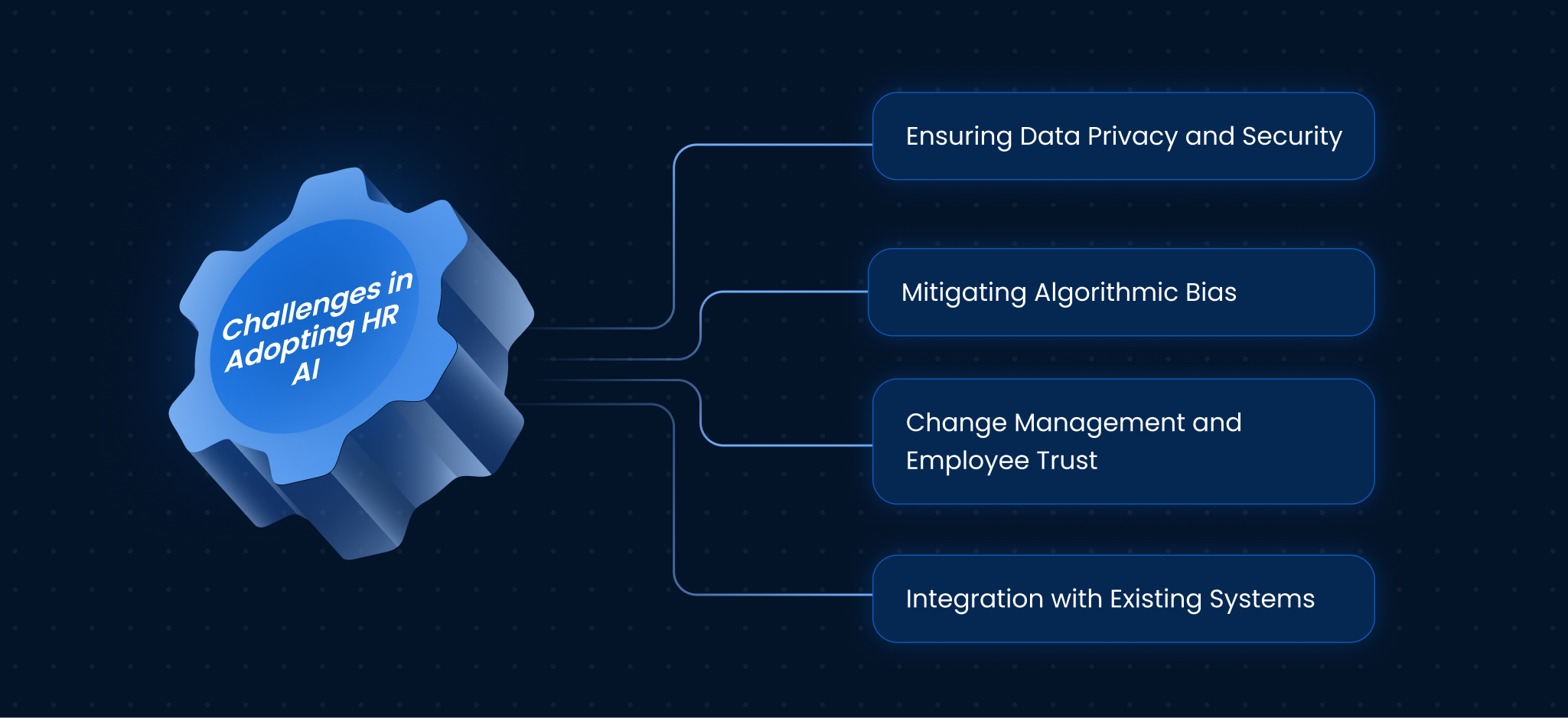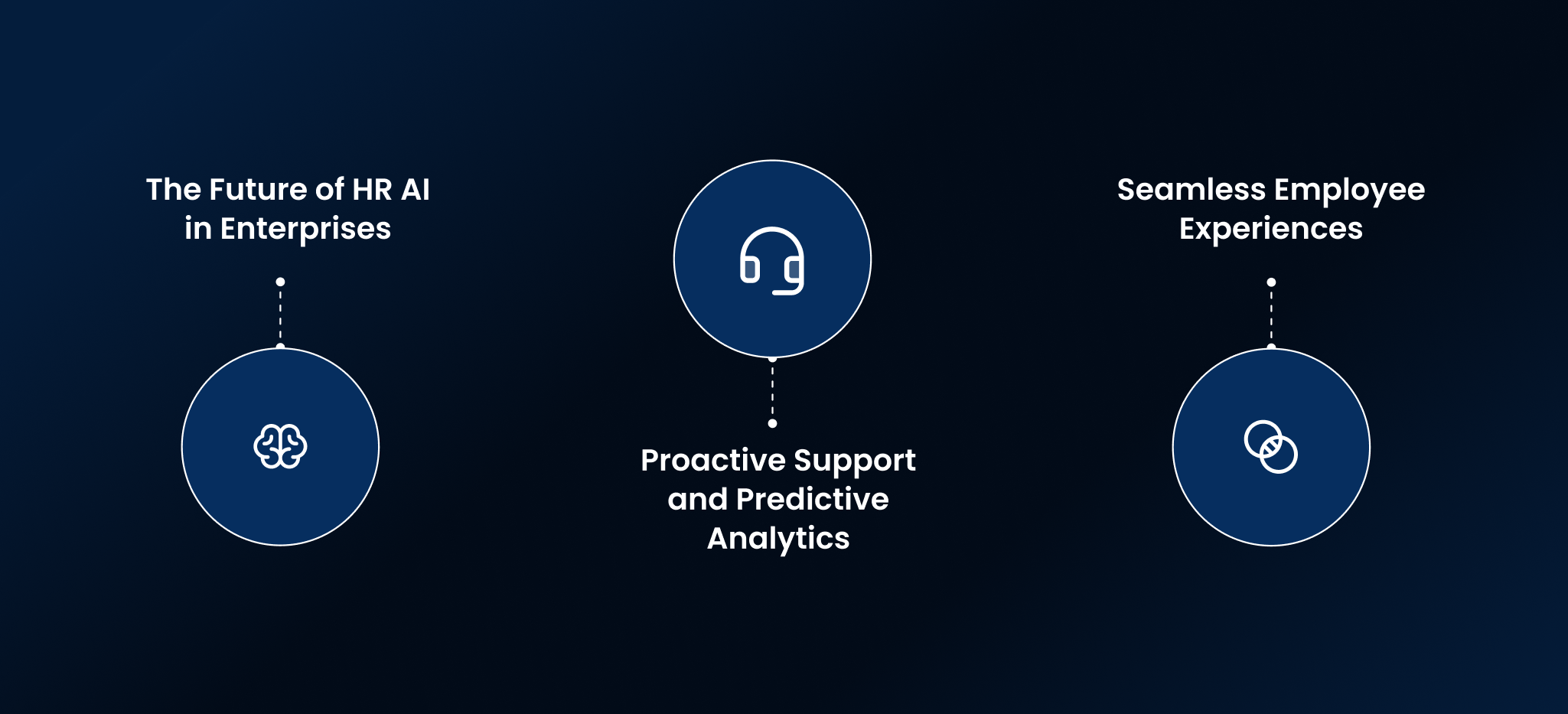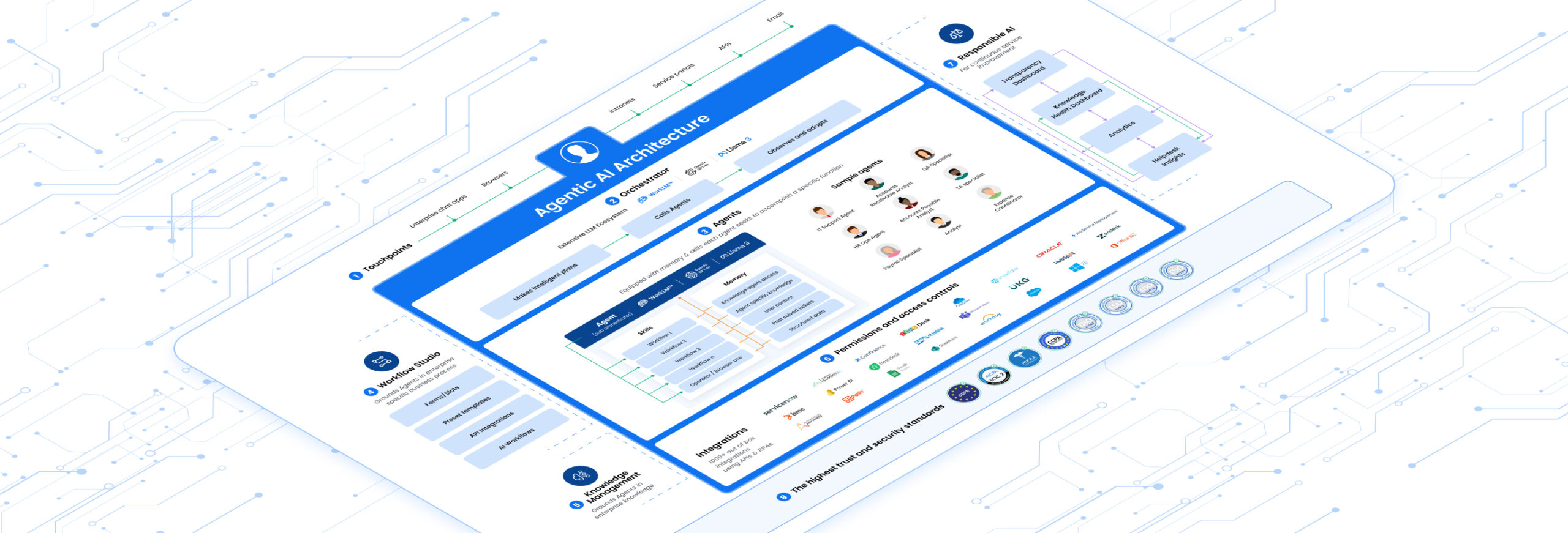Introduction
For Chief People Officers and Heads of HR in large U.S. companies, the phrase “HR AI” often sparks a mix of curiosity and strategic consideration. You see yourselves as people leaders, focused squarely on employee satisfaction, productivity, and fostering a thriving workplace culture. Artificial Intelligence in HR isn’t just a technical buzzword; it’s a powerful ally in achieving these critical goals. Indeed, the right HR AI solutions can fundamentally reshape how your organization supports its most valuable asset: its people.
What is HR AI and Why It Matters
At its core, HR AI refers to the application of artificial intelligence technologies to various human resources functions. Think of it as a smart assistant that can understand, analyze, and even act on behalf of your HR team, making processes smoother and more personalized for every employee. This isn’t about replacing human connection; rather, it’s about enhancing it by freeing up your people leaders to focus on strategic initiatives and direct employee engagement.
Why does it matter to you, a CPO? It matters because it directly impacts your ability to attract, develop, and retain top talent. Furthermore, it influences operational efficiency, employee morale, and ultimately, your company’s bottom line. When employees feel supported and can quickly get answers, their satisfaction and productivity naturally increase. Consequently, HR AI becomes a strategic imperative, not just a departmental tool.
Key Use Cases of HR AI in the Employee Lifecycle
The beauty of HR AI lies in its versatility across the entire employee journey, from the moment someone considers joining your company to their long-term growth and beyond.
-
Intelligent Talent Acquisition: Picture this: instead of sifting through thousands of resumes, an AI sifts through applications to identify candidates with the best potential fit, not just based on keywords, but on a deeper analysis of skills and experience. Moreover, it can proactively engage with potential candidates, personalizing outreach and streamlining the initial screening process. This ensures your recruiters spend more time connecting with promising individuals and less time on administrative tasks.
-
On-Demand HR Support: Imagine an employee needing to understand their benefits package or inquire about a payroll discrepancy. Typically, they might navigate complex internal portals or wait for an HR representative. However, with HR AI, they can simply ask a question and receive an instant, accurate answer, often through a chat interface they already use. This immediate support significantly boosts employee satisfaction.
-
Personalized Learning and Development: For a large organization, offering relevant growth opportunities to everyone is a monumental task. Fortunately, HR AI can analyze an employee’s role, career aspirations, and skill gaps to recommend personalized training courses, mentorship programs, and internal mobility options. Therefore, it empowers individuals to take ownership of their development and helps your company cultivate future leaders from within.
-
Employee Sentiment and Engagement: Understanding how your employees truly feel is crucial. HR AI tools can analyze feedback from surveys, internal communications, and other sources to provide a real-time pulse on morale and identify potential issues before they escalate. This allows you to proactively address concerns and build a more positive work environment.
-
Efficient Performance Management: While human judgment remains essential, HR AI can assist managers by providing objective data points, identifying patterns in performance, and even suggesting coaching opportunities. This helps mitigate unconscious bias and ensures that performance discussions are fair, transparent, and focused on growth.
Benefits of HR AI for Organizations and Employees
Embracing HR AI brings a wealth of advantages for both your company and your workforce.
- For Organizations:
- Enhanced Productivity: By automating routine inquiries and administrative tasks, HR teams can dedicate more time to strategic initiatives, talent development, and complex employee relations. This leads to a more efficient and impactful HR function.
- Data-Driven Decisions: HR AI provides powerful insights into workforce trends, talent gaps, and employee sentiment, enabling you to make more informed decisions about staffing, training, and policy adjustments.
- Cost Savings: Automation reduces the need for manual processing, minimizes errors, and optimizes resource allocation, leading to significant operational cost savings over time.
- Improved Compliance: AI can help monitor and ensure compliance with ever-evolving labor laws and internal policies, reducing risks and potential liabilities.
- For Employees:
- Instant Access to Information: No more waiting for answers. Employees can get immediate support for common questions, anytime, anywhere. This reduces frustration and improves their overall experience.
- Personalized Support: From tailored learning recommendations to custom career paths, HR AI ensures that each employee feels valued and supported in their unique journey within the company.
- Fairer Processes: By reducing human bias in areas like hiring and performance management, AI helps create a more equitable and transparent workplace.
- Greater Focus on Meaningful Work: When routine tasks are handled by AI, employees can spend more time on engaging, high-impact work that truly leverages their skills and contributes to the company’s mission.
Challenges in Adopting HR AI
While the benefits are clear, successfully adopting HR AI does come with its share of considerations. People leaders need to be aware of potential hurdles and how to navigate them effectively.
- Ensuring Data Privacy and Security: The use of AI involves handling sensitive employee information. Therefore, robust data security measures and strict adherence to privacy regulations are paramount. It’s crucial to partner with vendors who prioritize and demonstrate strong data protection protocols.
- Mitigating Algorithmic Bias: A significant concern is ensuring that AI systems do not perpetuate or amplify existing human biases. This requires careful auditing of algorithms, diverse training data, and a commitment to transparency. It’s not enough to just implement AI; it must be implemented fairly and ethically.
- Change Management and Employee Trust: Introducing new technologies can sometimes lead to apprehension among employees. Consequently, clear communication, comprehensive training, and demonstrating the value of HR AI to individuals are essential for fostering trust and adoption. It’s important to emphasize how AI complements human work, rather than replaces it.
- Integration with Existing Systems: Large enterprises often have complex HR ecosystems. Integrating new HR AI solutions seamlessly with existing payroll, HRIS, and other systems can be a technical challenge. Therefore, choosing adaptable and compatible solutions is key.

The Future of HR AI in Enterprises
The future of HR AI is incredibly dynamic, promising even more sophisticated and impactful solutions. We are moving beyond simple automation towards what we call “Agentic AI.”
- Agentic AI in HR: This represents the next frontier. Unlike traditional AI that simply executes predefined tasks, Agentic AI can understand complex requests, plan multi-step solutions, and even interact with different systems autonomously to resolve issues. Imagine an AI agent that doesn’t just answer a question about leave policy but actually initiates the leave request process, checks eligibility, and updates the necessary systems, all without human intervention. This capability is poised to redefine efficiency.
- Proactive Support and Predictive Analytics: Future HR AI will become even more proactive. It will anticipate employee needs, flag potential issues before they arise, and offer personalized interventions. For example, it might identify patterns indicating an employee is at risk of burnout and suggest resources or check-ins.
- Seamless Employee Experiences: The goal is a truly unified and intuitive employee experience where individuals can access information, complete tasks, and receive support across IT, Finance, and HR functions from a single, intelligent interface. This convergence will dramatically simplify internal processes.

How Leena AI is Redefining HR with Agentic AI
At Leena AI, we are at the forefront of this revolution, specifically with our groundbreaking Agentic AI solutions tailored for enterprise challenges. We understand that as a CPO, your focus is on delivering exceptional employee experiences and driving strategic value. Our Agentic AI is designed to do exactly that, by taking on the heavy lifting of resolving employee queries across IT, Finance, and HR.
Imagine an employee facing a login issue, a question about their bonus structure, and a request for a new company laptop. Traditionally, these would involve separate tickets, different departments, and often frustrating delays. With Leena AI’s Agentic AI, an employee can simply articulate their need in natural language. Our AI doesn’t just provide a static answer; it acts. It can reset passwords, access personalized financial data to clarify bonus details, and even initiate the procurement process for a laptop, interacting directly with your existing backend systems. This capability empowers employees with instant, accurate resolutions, which significantly boosts their satisfaction and productivity.
Ultimately, Leena AI helps enterprises create a more responsive, efficient, and people-centric workplace. We take the burden of repetitive inquiries off your teams, allowing your HR, IT, and Finance professionals to concentrate on more complex, strategic tasks. This isn’t just about automation; it’s about intelligent autonomy, ensuring that your employees always have an informed and capable assistant at their fingertips, leading to a truly elevated employee experience. Leena AI is dedicated to making HR AI not just a tool, but a strategic partner in building a future-ready enterprise.
Frequently Asked Questions
1. What is the biggest advantage of implementing HR AI in a large company?
The biggest advantage is the ability to provide instant, personalized support to all employees for routine queries, drastically improving efficiency and employee satisfaction. Furthermore, it frees up your HR team for strategic work.
2. Will HR AI replace human HR professionals?
No, HR AI is designed to augment, not replace, human HR professionals. It handles repetitive tasks, allowing your HR team to focus on complex problem-solving, strategic planning, and fostering human connection, which are areas where human expertise is irreplaceable.
3. How can I ensure our HR AI system is fair and unbiased?
Ensuring fairness requires selecting vendors committed to ethical AI development, regularly auditing algorithms for bias, and using diverse, representative data for training. Transparency in how the AI makes decisions is also crucial.
4. Is HR AI only for large companies, or can smaller businesses benefit too?
While the benefits are scaled for large enterprises, HR AI solutions are increasingly adaptable and can provide significant value to businesses of all sizes, enhancing efficiency and employee experience wherever implemented.
5. What kind of data does HR AI need, and how is it protected?
HR AI typically uses various types of employee data, from personal details to performance metrics. Protection is paramount, involving robust encryption, access controls, compliance with data privacy regulations, and secure cloud infrastructure from reputable vendors.
6. How quickly can we expect to see results after implementing HR AI?
The timeline for results can vary, but many organizations report significant improvements in employee query resolution times and HR team efficiency within a few months of a well-planned HR AI implementation.
7. What's the difference between traditional HR AI and Agentic AI in HR?
Traditional HR AI primarily answers questions or automates single-step tasks. Agentic AI, like what Leena AI offers, goes further; it can understand complex requests, plan and execute multi-step solutions across different systems, and proactively resolve issues without continuous human oversight.













